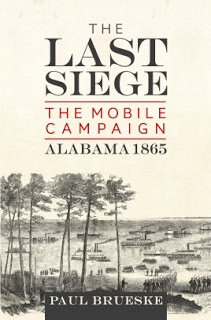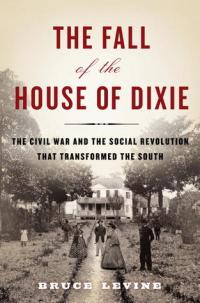Columbus, Georgia 1865: The Last True Battle of the Civil War is one of those refreshing and rare books in the veritable flood of Civil War-related literature that truly offers something new for readers. Far from yet another attempt at reinterpreting oft-repeated information, author Charles Misulia explores a little-known story that has received surprisingly scant scholarly attention in an engaging fashion. The book is thoroughly researched, comprehensive in scope and content, and well written. In it, the author has given the dramatic Civil War saga of Columbus, the city along the Chattahoochee River that became perhaps the second-largest industrial center in the Confederacy, the retelling it so richly deserves.

Misulia, a Florida attorney who also runs a company which manufactures reproductions of historical weapons, has closely studied the Battle of Columbus for several years. Previous to this book, he produced a driving tour of Civil War sites associated with the battle, and served as chief consultant for the award-winning documentary “The Last Ditch: The Final Battle of the Civil War,” which chronicles the encounter. In Columbus, Georgia 1865, his years of painstaking and wide-ranging research are brought to bear on a narrative that is easily the most thorough ever written on the battle.
Misulia begins with an enlightening discussion of the cavalry campaign led by Union General James H. Wilson which, after fighting the Battle of Selma and capturing the city of Montgomery, targeted Columbus. He provides a portrait of the city, its impressive concentration of war industries, and the somewhat disorganized and ultimately inadequate efforts at planning for defense of the town prior to Wilson’s arrival. Misulia moves on to give an account of the fighting that occurred in and around Columbus, fiercer and on a larger scale than perhaps is commonly thought, in incredible detail. He continues his narrative to include a discussion of the brief occupation of the city by Wilson’s forces and the effects of the contest on the local population. He includes six appendixes with information on the order of battle and all known casualties; Medal of Honor recipients who were recognized for service in the battle; suggestions for visitors to Columbus interested in learning about the area’s Civil War heritage; and an essay discussing the strength of the evidence supporting the many other claims to the title of “last battle” of the war. The book also features a number of maps and images of key participants.
Misulia’s writing sparkles in his recounting of the battle waged for the city of Columbus. From the opening shots of the battle exchanged near the village of Crawford, Alabama to the dramatic nighttime assault on Confederate entrenchments on the hills of the western bank of the Chattahoochee in and around the city of Girard and the sudden capture of the city, he takes the reader step by step through a conflict rich in drama. Misulia weaves details of the close-quarters combat into a captivating story made all the more vivid by meticulous mining of the diaries and journals of participants as well as official records. This thorough research enables him to capture the essence of the “fog of war” in which crucial battlefront decisions were made by consistently keeping readers apprised of information on the battle’s progress available to the participants at any given time. Considering the climax of the contest actually took place after dark and on uneven terrain across a wide front, this mastery of resources is a particular strength of the narrative.
What promises to make this book interesting for many readers of Southern history and separates it from much of the other current Civil War scholarship, though, is the author’s informed discussion of the impact of the fighting on the residents of Columbus. Ranging from wealthy businessmen and housewives to millworkers and slaves, the battle and its associated upheaval rocked the lives of thousands of people in its wake. This aspect of the clash is told through compelling stories of numerous individuals and an in-depth portrait of the physical destruction of much of Columbus’ industrial riverfront. The displacement of numerous laborers, the search for order by former slaves, and the widespread looting of the city are discussed from the vantage points of both citizens and soldiers. Taken together with Misulia’s lively account of the military engagement, these stories combine to capture the chaos of the time and make the war and its consequences tangible to readers on an emotional level.
Ironically, one of the shortest sections of the book may actually prove to be a primary reason it will ultimately come to the attention of a national audience of Civil War scholars and enthusiasts who have a seemingly indefatigable interest in every detail of the conflict. In an appendix entitled “The Last Real Battle of the Civil War,” Misulia sifts through the various claims to the title of “last battle” of the war which have been offered over the course of nearly a century and a half of scholarship. By measuring these claims against a series of logical and well-defined benchmarks, he concludes the battle at Columbus can justly claim the honor. While the true historical importance of this title may be questionable and Misulia’s conclusion will surely be second-guessed by many, it will do much to help raise awareness of the battle to those interested in both Georgia and Civil War history.
In Columbus, Georgia 1865, Charles Misulia has rescued from obscurity a captivating story that for far too long has been relegated to a historical footnote. While a host of books, including Noah Andre Trudeau’s Out of the Storm, James Pickett Jones’ Yankee Blitzkrieg, and David Williams’ Rich Man’s War, have provided us with overviews of the closing campaigns of the Civil War and chronicled Wilson’s raid in some detail, up until now there has been no book-length treatment of the Battle of Columbus. Columbus, Georgia 1865 is entertaining, enlightening, and an essential volume for anyone interested in the Civil War in Georgia.
JMB





